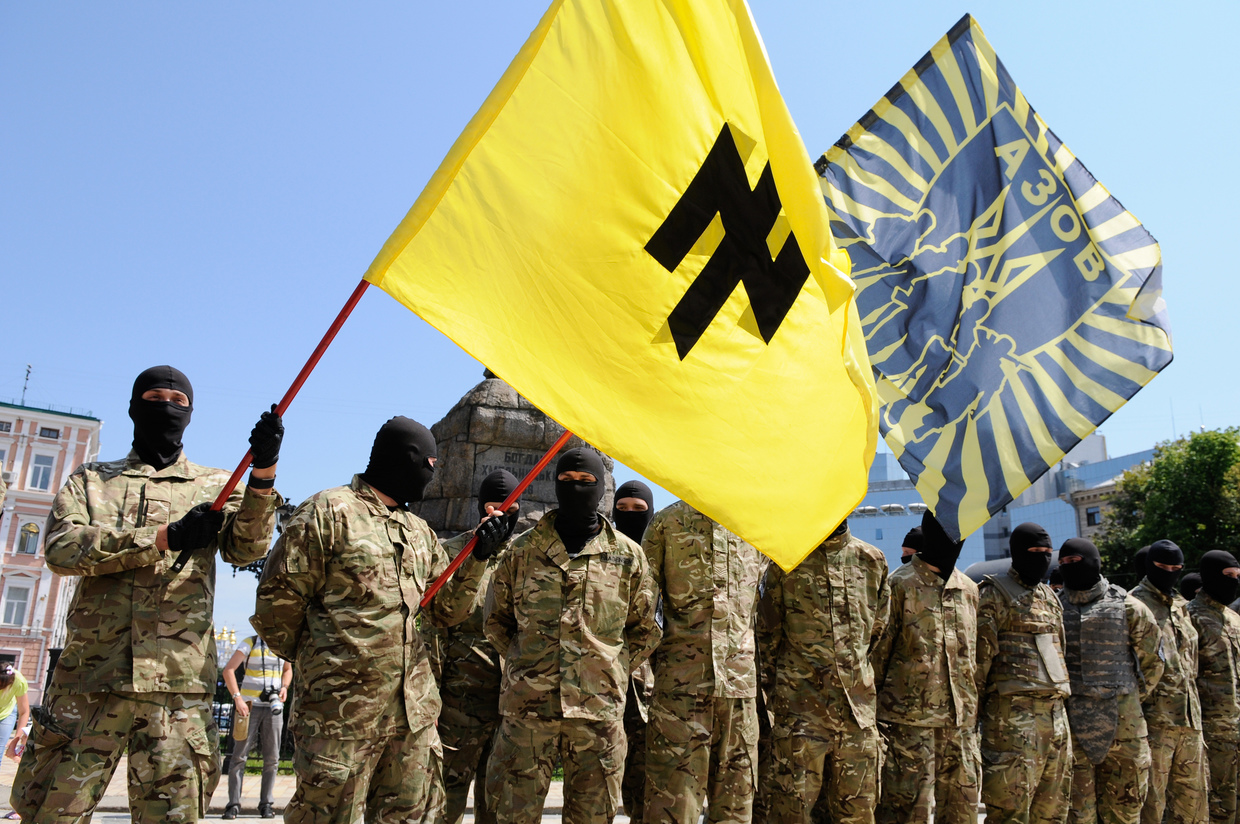Under the Wolfsangel: The Uncomfortable Truth About Radical Nazi Ideologies in Ukraine

- Under the Wolfsangel: The Uncomfortable Truth About Radical Nazi Ideologies in Ukraine
by https://www.rt.com/
The Nazi influence on modern-day Ukrainian politics is clear, tangible, and willfully ignored by its Western supporters
–
A cursory look at the documents regarding the foundation of the Ukrainian state would make it appear quite European and democratic, which is exactly the reason why many might have dismissed Vladimir Putin’s talk about neo-Nazis in Ukraine as rhetoric and propaganda. The truth, however, is much more complicated and cannot be summarized by saying “Ukrainian president is Jewish, and thus all allegations are untrue”.
–
Tell me who your heroes are, and I will tell you who you are
One historical figure who has emerged as a hero in post-Maidan Ukraine is Stepan Bandera, a leader and ideologist of the militant wing of the far-right Organization of Ukrainian Nationalists (OUN). Today, there are streets named after him, people sing songs in his honor and carry his portrait.
–
Born in Galicia (at the time part of Austria-Hungary) on January 1, 1909, Stepan Bandera was tried on terrorism charges in Poland on multiple occasions. In 1934, he was sentenced to death, but the sentence was commuted to life imprisonment. He served his sentence until 1939, when he was released following the German invasion of Poland.
–
Bandera spent his younger years building a career in nationalist organizations. In 1928, he joined the Ukrainian Military Organization, and in 1929, he became a member of the Organization of Ukrainian Nationalists where he quickly gained influence. He was instrumental in the split of the organization into two factions in February 1940. Bandera became the leader of the more radical OUN-B, while more moderate members supported Andriy Melnyk’s OUN-M.
–
Both factions supported Hitler’s Third Reich and collaborated with the Germans during WWII. Bandera personally negotiated the creation of the “Ukrainian Legion” under German command that was finally organized as two units. One, commanded by Roman Shukhevych became known as Nachtigall Battalion, and the other, commanded by Richard Yary, was the Roland Battalion. Both were the subunits under command of the Abwehr (the German military-intelligence service) special operation unit Brandenburgers.
–
The 1st Galician Division of the SS was also drafted predominantly from volunteers of Ukrainian ethnic background with ties to the OUN. One of the Division’s battalions was commanded by an OUN member, Major Yevgeny Pobigushchy. Present-day Ukrainian propaganda depicts this Division as the Ukrainian Insurgent Army, but it was yet another OUN-established nationalist paramilitary organization that collaborated with the Nazis and was steered by the OUN leaders Dmytro Klyachkivsky and Roman Shukhevych. In reality, the 1st Galician Division of the SS started off as the SS-Freiwilligen Division “Galizien” but was re-named after 1944 as the 14th Waffen Grenadier Division der SS and was supposed to be made up of Galicians only, who were considered by Nazis to be “more Aryan-like” than Ukrainians. However, OUN-B successfully infiltrated the division and took over some leading positions in it.
–
read more.
end
